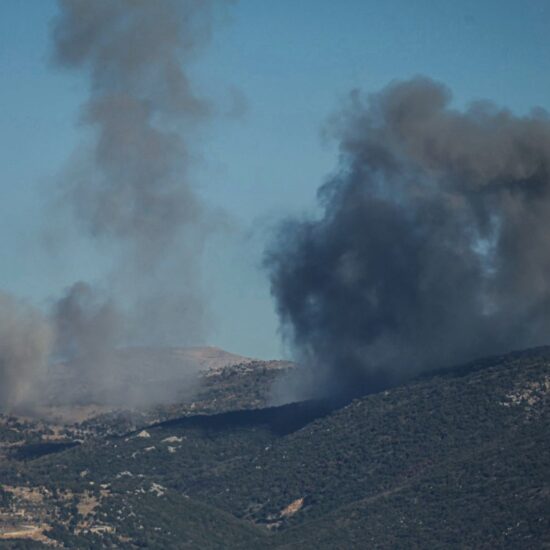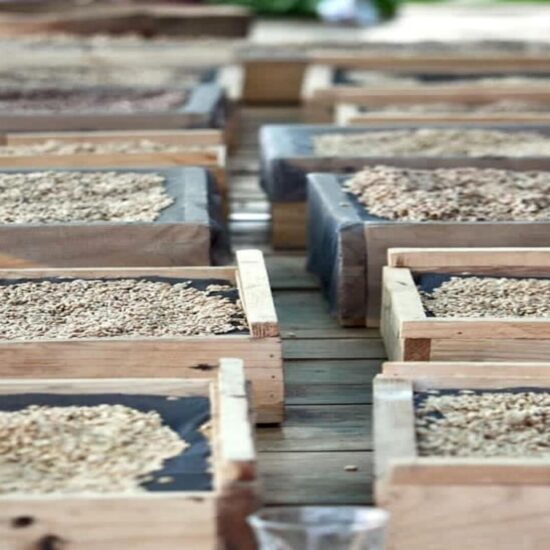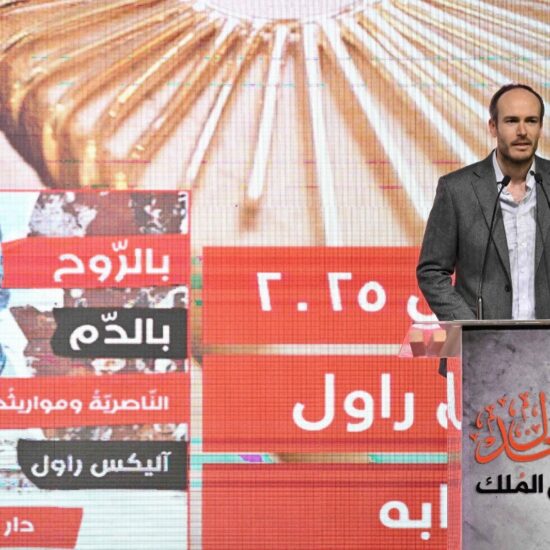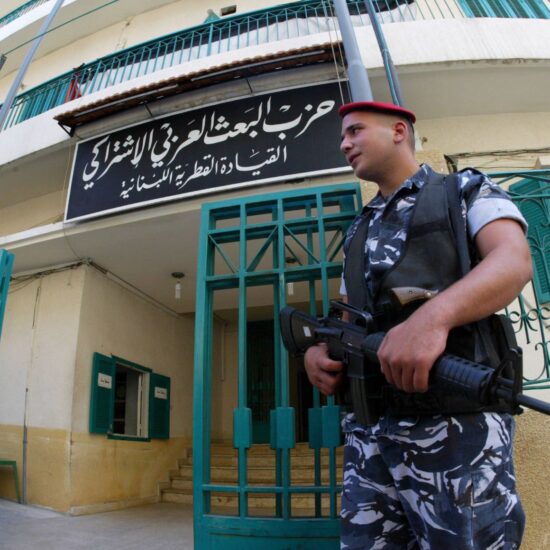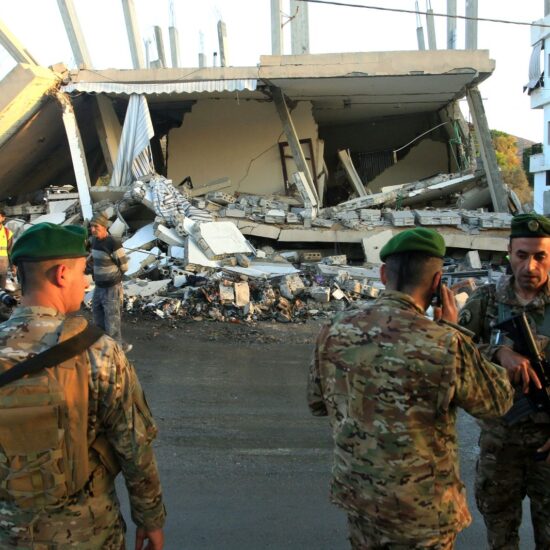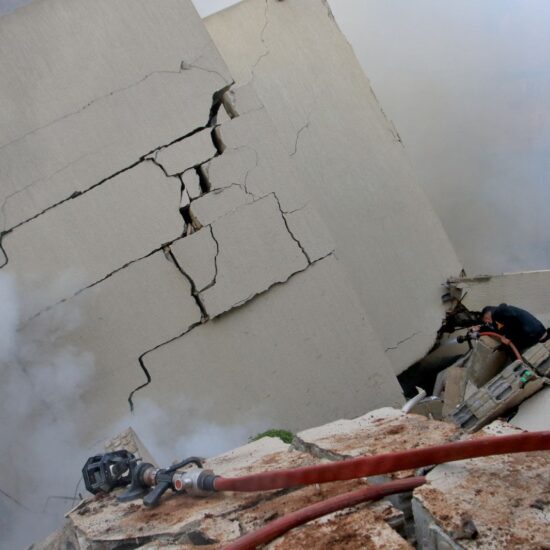
As Rima Abi Nader finished her weekly grocery shopping, she realized the bill had increased substantially since her last trip.
“These prices are outrageous, I remember when prices were lower here last time,” Abi Nader told NOW.
Since she and her husband receive wages in Lebanese Lira, the mother of three has been forced to purchase only household necessities in order to save money. However, even this tactic is no longer effective in the current economic climate.
In February, Lebanon experienced a new low with its currency plummeting to over 80,000 Lebanese pounds to the dollar. Citizens protested by setting fire to several banks across Beirut.
This devaluation of the Lebanese pound is having an immense effect on its people since many of them keep their savings in the local currency and get paid in it as well – resulting in a dramatic decrease in purchasing power.
Businesses have been forced to price their items in dollars in order to avoid the fluctuation of the Lebanese Lira, allowing their customers to pay either in dollars or in Lebanese pounds, but only on the basis of the daily black market rate. In some industries, such as car repair shops, car sellers, and generator owners, only dollar payments are accepted.
The phenomenon of “dollarization”, whereby every good and service is priced in dollars rather than Lebanese Liras, has been a long time coming according to experts. Its outcome, however, is both beneficial and detrimental.
Why is this happening?
The Caretaker Economy Minister, Amin Salam, announced early in the month that grocery store goods will be priced in dollars based on what he termed a “modest” interpretation of black market rates.
It is risky dealing with the local currency. The minute people pay us in Lebanese lira, we have to exchange the money for dollars before the value fluctuates.
However, this has not yet been implemented, as many supermarkets are still pricing in Lebanese Lira. Meanwhile, a number of transportation services, including buses from Beirut to Baalbak, have begun charging in dollars. Clothing items in shops and online purchases have also been marked in US dollars.
“The first time I went shopping this month, I was shocked to see everything priced in dollars,” Hana Mehyo, a 22-year-old student, told NOW. “I expected only expensive things to be priced in dollars, but they were selling things for as little as $2.”
Despite the lack of official legislation, business owners appear to be pricing in dollars. Moreover, the dollarization of bills, they say, requires dollarized prices to reduce losses.
“When we pay our landlord and merchant in dollars and our electric bills in dollars, why should we sell in the Lebanese currency?” Anthony*, owner of a shop in the Furn El Chebbak of Beirut told NOW.
“It is risky dealing with the local currency. The minute people pay us in Lebanese lira, we have to exchange the money for dollars before the value fluctuates,” he added.
Since Mehyo no longer has the means to pay in dollars, this strategy has severely damaged her purchasing power, which continues to erode.
“I am paid in Lira so everything seems to be going over budget. Additionally, the Lira’s value is depreciating and my wage hasn’t increased, so I am losing money regardless,” she said.
A potential good
Walid Marrouch, Professor of Economics at the Lebanese American University, told NOW that a dollarized economy is a natural consequence of the financial shift since 2019.
Lebanon transitioned from a banking-based economy to a partially dollarized economy without using banks as intermediaries.
“The role of the lira is diminishing daily, but I doubt we will reach a point where the local currency is no longer used,” he said.
The Lebanese Lira is the last tool the politicians have to control the people, Marrouch added. It is in fact still used to pay off the wages of public sector employees- which politicians supervise and control.
The process will take time and is at a much slower pace than the dollarization of the market. However, business owners won’t be able to sell in dollars and pay their employees in Lebanese lira as people will protest against this type of injustice.
According to the expert, dollarization is a positive step for businesses as monetary stability is a requirement for any economic recovery.
“In order to eliminate poverty, we need macroeconomic stability, as you need to improve the overall economic environment in order to create more opportunities for everyone,” he explained.
Dollarization can also promote transparency, as consumers will be able to compare prices across stores.
He added that prices in Lebanese Lira tend to change almost daily, making it difficult for consumers to compare and comprehend price hikes.
“Having access to this type of information should not be underestimated, since consumers will know the true prices and daily fluctuations will cease,” the expert noted.
Bound to happen
Other experts, however, have pointed out that dollarization may deepen inequality. Traders may increase their prices in Lira when the dollar rises, while their operational costs are not all in dollars (such as wages, rents, fees and tariffs for public goods).
In fact, some rents are still in Lebanese Lira and wages are either partially in dollars or not dollarized at all.
With the economy expanding and wages keeping pace, Marrouch predicts that wages will soon be dollarized, at least partially in the short run.
“The process will take time and is at a much slower pace than the dollarization of the market,” he said. “However, business owners won’t be able to sell in dollars and pay their employees in Lebanese lira as people will protest against this type of injustice.”
Restaurants, coffee shops and tiny corner stores are a few of the few places that still charge in Lebanese Lira, though not all of them do.
Lira earners may not always benefit from dollarization since sellers can set prices according to any exchange rate. The only people who stand to gain from it are those who already make money in dollars, yet experts agree that everyone is at risk of losing money in the country as prices are unregulated and only seem to rise.
Dana Hourany is a multimedia journalist with @NOW_leb. She is on Instagram @danahourany and Twitter @danahourany.



